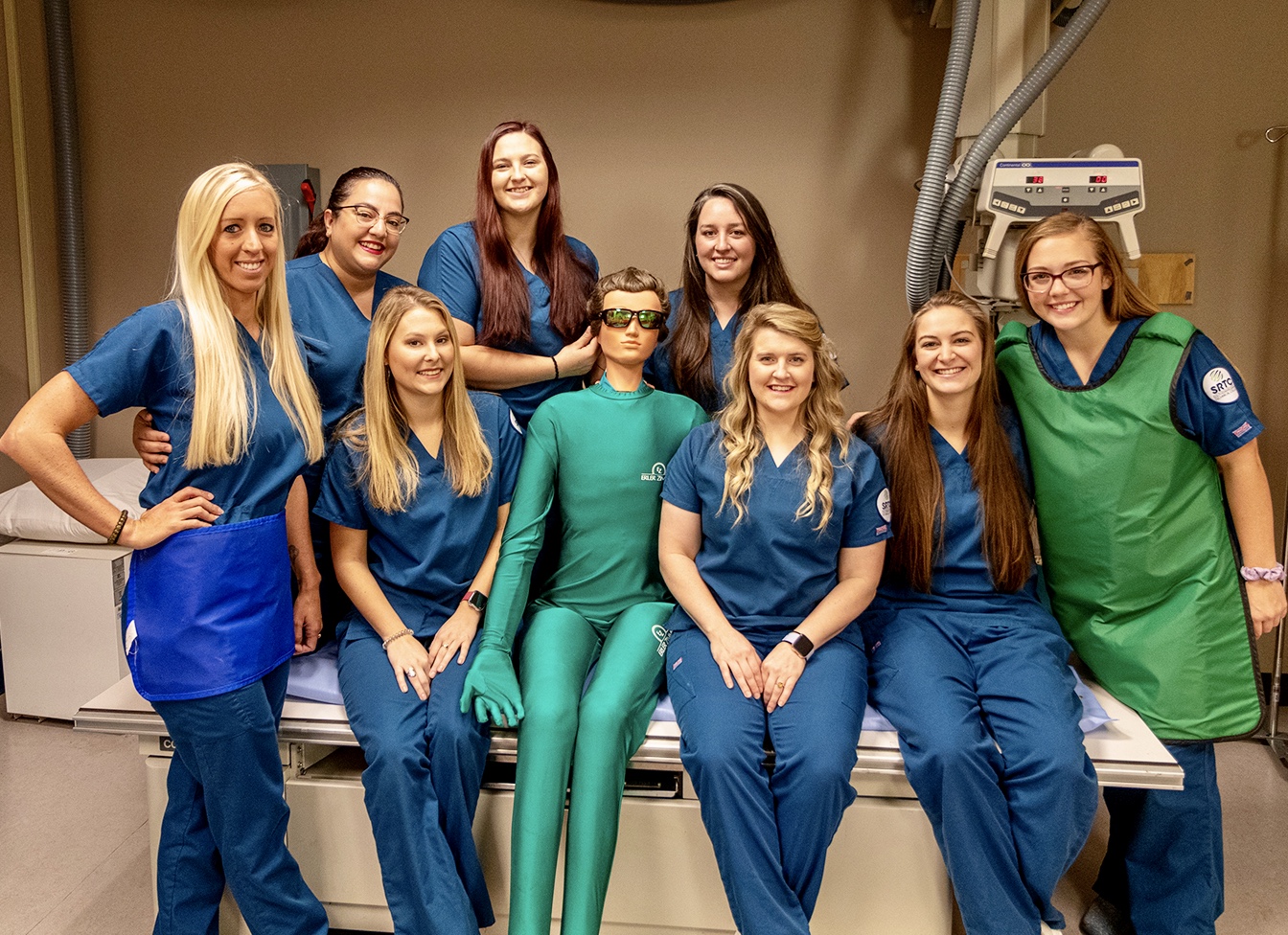There is a phantom at Southern Regional Technical College (SRTC) - Thomasville. She resides in the Radiologic Technology x-ray lab, where the faculty and students have named her Helga. Thin, willowy, and standing over 6-feet tall, Helga cuts a striking figure, but this phantom is no frightening apparition. She is state-of-the-art training equipment for SRTC’s Radiologic Technology program.

Helga replaced a decades-old hard plastic manikin that had been used by the Rad Tech program since its inception. While the previous model served its purpose as an educational tool, the new phantom includes several improvements for radiology training. The lightweight phantom is built around a real human skeleton, which was donated for research and education. The human skeleton is complete and includes articulated joints, which allow students to learn precise positioning and alignment techniques. The phantom’s interior structure includes lung, heart, and kidney shapes. These simulated organs create accurate shadows on x-ray images. Helga’s unique features allow students to collect realistic x-ray images without subjecting living volunteers to radiation during their training.
Radiologic Technology Program Chair Tony Turpin said that the new phantom provides first-rate teaching opportunities for positioning and alignment techniques in projection radiography. “Helga was handmade in Germany, and is truly unique in the world,” Turpin said. “At over $34,000, this phantom is a major investment in our students’ future. I believe that it is worth it, however, to provide our Rad Techs with innovative and intensive training experiences that will prepare them for careers in the high-tech field of Radiology.”
Helga’s purchase was made possible thanks to an allocation from Federal Perkins Funds, which is a primary federal funding source for career and technical education (CTE) programs. CTE programs are critical for preparing students for careers in local and regional economies. Since 2015, the Perkins grant has allowed SRTC to purchase more than half a million dollars’ worth of equipment for programs, providing students with practical hands-on training to master skills and techniques prior to employment. This reduces the time and money employers must spend training and orienting new employees, while increasing new employ confidence and proficiency.
